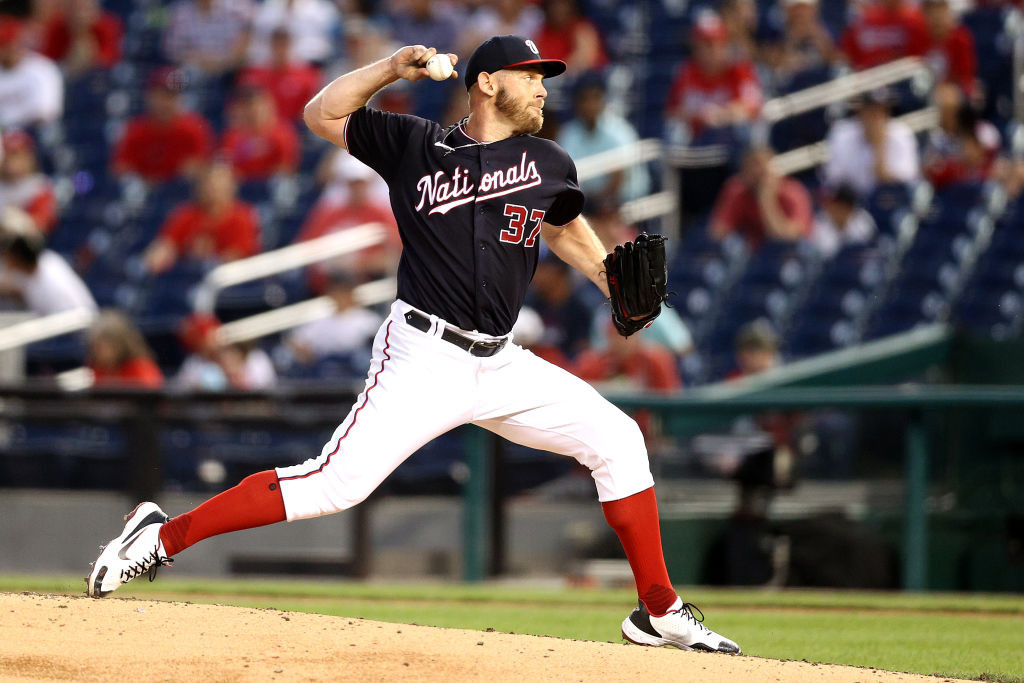For nearly a decade, the Nationals had one of the most successful and competitive rosters in baseball. They also had one of the most expensive rosters in the sport.
Each year from 2013-2021, the Nats finished with a payroll that ranked in the top 10 in the majors. Twice, they exceeded Major League Baseball’s luxury tax threshold, all in an attempt to finally win big in October.
That’s not the case anymore, and it probably won’t be the case again for a while.
After tearing down much of their roster during the 2021 season, the Nationals entered this season with a $135.4 million payroll that ranked 17th in the majors. Final figures haven’t been tabulated yet, but that ranking certainly went down by season’s end after Juan Soto and Josh Bell were traded to the Padres.
All of which leaves the franchise with as little commitment to player salaries heading into an offseason as has been the case in a long time.
At the moment, only two players are under contract with set salaries for 2023: Stephen Strasburg ($35 million) and Patrick Corbin ($24 million). And roughly $11.4 million of Strasburg’s salary is deferred until after his mammoth deal expires following the 2026 season.
That’s it. Nobody else is locked in at a set price yet.
There are 10 players who are eligible for arbitration this winter, with projected salaries ranging from as much as $8.2 million (Luke Voit) all the way down to $1 million (Hunter Harvey). Add Voit, Harvey, Erick Fedde ($3.6 million), Victor Robles ($2.5 million), Lane Thomas ($2.1 million), Kyle Finnegan ($2 million), Carl Edwards Jr. ($1.6 million), Tanner Rainey ($1.5 million), Ildemaro Vargas ($1.1 million) and Victor Arano ($1 million) to the tally, and you end up with a total of roughly $83.6 million.
Keep in mind one or more of those players could be non-tendered at the Nov. 18 deadline, bringing the total down even more.
All of that leaves 14 remaining spots on a theoretical opening day roster for players with fewer than three years of service time, all of them making at or near the 2023 league minimum salary of $720,000, adding a total of $11 million to a total projected payroll of roughly $94.6 million.
If the Nationals actually entered next season with a payroll that low, they’d probably rank among the five lowest-spending teams in baseball.
Will they actually enter next season with a payroll that low? You wouldn’t think so. There are legitimate roster holes that need to be filled, headlined by at least one experienced starting pitcher, a middle-of-the-order bat who would probably play a corner outfield position, possibly a first or third baseman and another reliever or two.
The question is: How much are they going to spend to fill those holes? Are these going to be cheap, short-term fixes, or is there any chance of a more substantial addition (aka somebody with an eight-figure annual salary)?
They added one such high-priced free agent last winter in Nelson Cruz ($12 million), but their next-highest commitment was a mere $4 million given to César Hernández. Neither of those signings worked out so well for the Nationals, but does that mean they’re more or less likely to spend more this winter in an attempt to avoid those kind of mistakes?
Payroll, of course, isn’t the only measurement of a team’s chances of winning. And certainly a rebuilding team focused on young players like the Nats isn’t going to spend as much as a veteran-laden team going all-in to win now.
But given the continued uncertain state of the Lerner family’s attempt to sell the franchise, and the very certain state of the team’s roster in the wake of a 107-loss season, it would be surprising to see the Nationals devote a significant amount of money to free agents this winter and return to their former place as one of baseball’s biggest spenders.
By accepting you will be accessing a service provided by a third-party external to https://www.masnsports.com/





